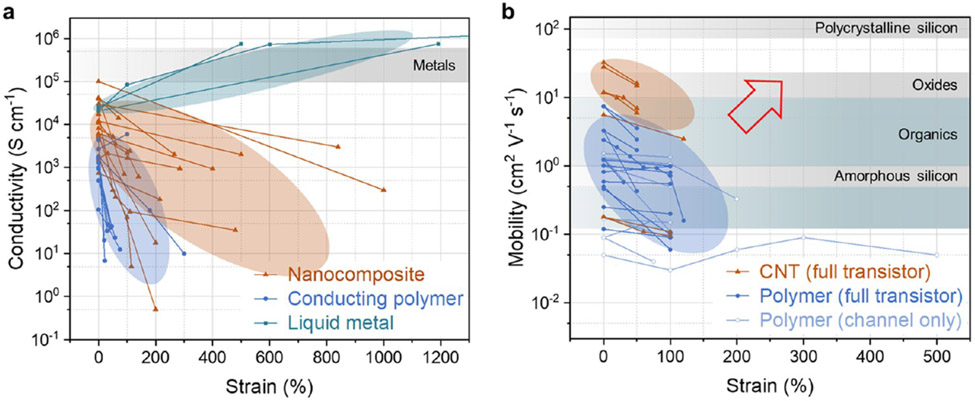Figure 7.
Performance of intrinsically stretchable (a) conductors and (b) semiconductors. (a) Intrinsically stretchable conductors are realized in three materials categories: nanocomposites, conducting polymers, and liquid metals; ionic conductors are not included. Conductivities of stretched liquid metals are calculated from resistance changes under unidirectional strain, based on the assumption of incompressible solid undergoing uniform deformation. Non-stretchable bulk metals are plotted in the gray band for comparison. Values extracted from refs 269, 285, 329-345. (b) Stretchable semiconductors are based on semiconducting CNTs or conjugated polymers. Mobility measurement was done in either stretched materials transferred to non-stretchable substrates (channel only) or fully stretchable transistors and transistor arrays (full transistor). Values for stretch directions both parallel and perpendicular to the channel length are included. Typical mobilities of common non-stretchable semiconductors are plotted in bands for comparison.346 Red arrow indicates area for improvement. Values extracted from refs 323, 324, 347-364.

